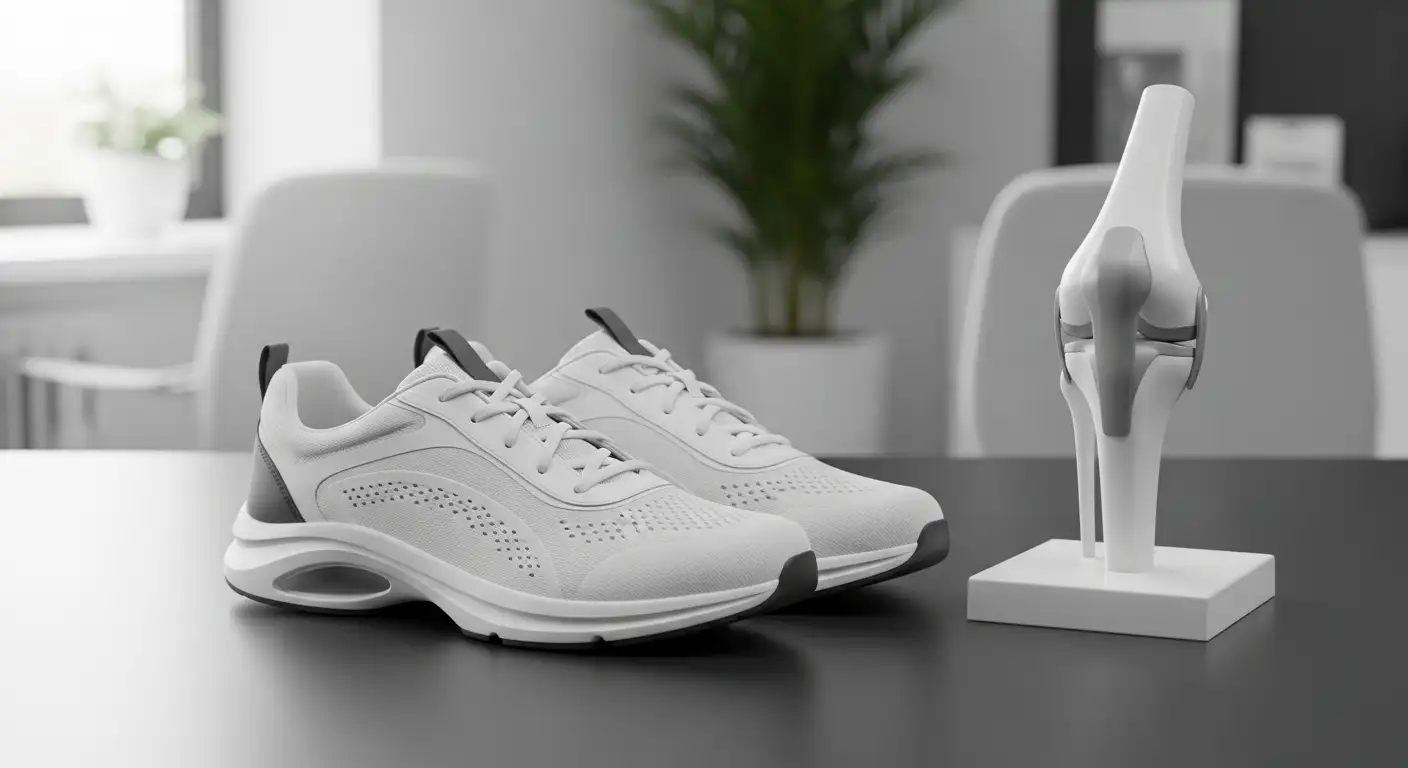
Understanding Knee Pain
Knee pain is a common issue that affects individuals of all ages. Understanding the nature of this discomfort is crucial in identifying effective treatment methods.
Introduction to Knee Pain
Knee pain can stem from various causes and may manifest as soreness, stiffness, or swelling. The knee joint is a complex structure consisting of bones, cartilage, ligaments, and bursae, which can all contribute to feelings of discomfort. Proper mechanics of the knee are essential for mobility, making it essential to address pain effectively.
Causes of Knee Pain
There are several factors that can lead to knee pain, including:
CauseDescriptionTraumatic InjuriesInjuries such as ligament tears, fractures, or dislocations can cause acute pain. Common injuries include anterior cruciate ligament (ACL) ruptures and meniscal tears. (NCBI Bookshelf)ArthritisDegenerative conditions like osteoarthritis can lead to inflammation and pain in the knee joint. Age and activity level can influence the likelihood of developing arthritis.InfectionsConditions like septic arthritis can result in knee effusion, characterized by fluid accumulation in the joint. The suprapatellar pouch plays a significant role in assessing these conditions. (NCBI Bookshelf)Inflammatory ConditionsConditions such as bursitis or tendinitis can cause localized pain and swelling around the knee. Specific injuries may also generate effusions. (NCBI Bookshelf)Degenerative ChangesOver time, repetitive stress on the knee joint can lead to changes that impact overall function and pain levels. Proper assessment is essential in identifying the exact nature of the pain.
Understanding these causes helps facilitate a more targeted approach to treatment. For more information on specific conditions related to knee pain, one can explore various articles linked throughout this piece. Attention to knee mechanics is crucial for recovery and preventing further complications.
The Role of Suprapatellar Pouch
Understanding the function of the suprapatellar pouch is essential in the context of knee health. This pouch plays a significant role in the anatomy and functionality of the knee joint.
Anatomy of Suprapatellar Pouch
The suprapatellar pouch, also known as the suprapatellar bursa or suprapatellar recess, is recognized for its position proximal to the knee joint. It is situated between the prefemoral fat pad and the suprapatellar fat pad. The primary function of this pouch is to reduce friction between the moving structures of the knee, enhancing smooth motion during activities like walking or running. In approximately 85% of individuals, the suprapatellar bursa communicates with the knee joint, which aids in assessing bursal distension on X-rays as an indicator of knee effusion [1].
The articularis genu muscle plays a pivotal role by inserting into the suprapatellar bursa. This muscle helps prevent the bursa from collapsing into the knee joint cavity, maintaining structural integrity and functionality [2].
Anatomical FeatureDescriptionLocationProximal to the knee jointPositioningBetween prefemoral and suprapatellar fat padsCommunicationCommunicates with the knee joint in ~85% of individuals
Functionality in Knee Joint
The suprapatellar pouch serves multiple functions crucial for maintaining knee joint health. Its primary role includes reducing friction, which is vital for smooth motion during joint activities. Additionally, the pouch plays a crucial part in the distribution and absorption of synovial fluid, which lubricates the knee, further enhancing its functionality.
Moreover, if the suprapatellar pouch is inflamed or infected, it can lead to complications such as the spread of infection into the knee joint itself. The proximity of the suprapatellar bursa to the synovial cavity underscores its importance as it can facilitate the transmission of infection [3].
The dimensions of the suprapatellar pouch can also be clinically relevant. Measurements of the pouch have been linked to the severity of knee injuries. Studies indicate that factors such as weight, walking ability, and the size of the suprapatellar pouch correlate with neglected osteochondral fractures, particularly in cases of traumatic patellar dislocation.
FunctionalityDescriptionFriction ReductionHelps achieve smooth joint movementSynovial Fluid Absorption and DistributionLubricates and nourishes the knee jointInfection RiskCan spread infection due to proximity to the synovial cavity
Understanding the anatomy and functionality of the suprapatellar pouch is vital for recognizing its significance in knee health and its implications in diagnosing and managing knee pain. These factors underscore the joint's complex nature and the importance of careful evaluation when knee issues arise.
Assessing Knee Effusion
Knee effusion refers to the accumulation of fluid in or around the knee joint, which can lead to swelling and discomfort. It is essential to identify knee effusion accurately to determine the underlying cause and implement appropriate treatment.
Identifying Knee Effusion
To effectively identify knee effusion, healthcare professionals can use several assessment techniques. Commonly utilized methods include the patellar tap test and the fluid displacement test.
These tests can help indicate joint effusion when fluid is present [5].
Diagnostic Tests for Effusion
In addition to physical tests, diagnostic imaging plays a crucial role in assessing knee effusion. Lateral knee radiographs can be highly sensitive for detecting fluid accumulation. A suprapatellar pouch measurement greater than 10 mm may prompt further evaluation through magnetic resonance imaging (MRI), which can help avoid delayed diagnoses and enhance patient outcomes [4].
Special tests, such as the balloon test, ballottement test, and bulge test, can also confirm the presence of knee effusion. These tests can provide invaluable information, including the type of fluid present, which helps differentiate between potential diagnoses, such as inflammatory, noninflammatory, or infectious conditions.
Test TypeDescriptionBest ForPatellar Tap TestChecking for fluid under the kneecapModerate-sized effusionsFluid Displacement TestAssessing fluid movement in the jointSmaller effusionsLateral Knee RadiographsImaging for detecting fluid accumulationAll sizes of effusionSpecial TestsVariety of tests for confirming effusionDiagnosis of underlying cause
Understanding these assessments allows healthcare providers to effectively diagnose knee effusion and guide appropriate treatments. Proper identification and management are essential for maintaining knee health and functionality.
Complications and Conditions
Understanding the complications associated with knee injuries and conditions is essential for proper diagnosis and treatment. The suprapatellar pouch plays a significant role in knee joint health and can be affected by infections and traumatic injuries.
Infections and Knee Joint
Infections that target the knee joint can pose serious health risks. The suprapatellar bursa is one of the four knee bursae that communicate with the synovial cavity, and if infected, it can facilitate the spread of infection to the knee joint [3]. Symptoms of an infected knee joint may include swelling, pain, redness, warmth, and fever.
Infection TypeSymptomsTreatment OptionsSeptic ArthritisPain, swelling, feverAntibiotics, joint aspirationBursitisLocalized swelling, painRest, ice, medicationOsteomyelitisSevere pain, systemic issuesAntibiotics, surgery
A thorough history and physical examination are vital for assessing knee effusion, and determining the nature of the infection. Diagnostic imaging such as MRI may be necessary to confirm the diagnosis and rule out complications [6].
Traumatic Injuries and Knee Swelling
Traumatic injuries can lead to significant knee swelling, often indicating an underlying issue such as ligament tears, meniscus injuries, or fractures. The suprapatellar pouch may also accumulate fluid, contributing to effusion.
In cases of acute injury, swelling can be attributed to the inflammation of the synovium and surrounding tissues, as well as the escape of synovial fluid into the joint space. This fluid consists of synovial fluid and blood plasma ultrafiltrate, containing molecules like hyaluronic acid and glycoproteins.
Type of InjuryCommon SymptomsDiagnostic TestsLigament TearPain, instabilityMRI, CT scanMeniscus InjuryLocking sensation, swellingMRI, physical examinationFractureSevere pain, inability to bear weightX-ray, CT scan
Proper evaluation of an acutely swollen knee involves a thorough examination to determine the cause, whether it is infectious, traumatic, or degenerative in nature [6]. Identifying the root cause is critical for an effective treatment plan tailored to the patient's needs.
Treatment and Management
Addressing conditions related to the suprapatellar pouch and knee pain requires a thorough understanding of treatment options. This section covers two vital aspects: managing neglected fractures and the surgical interventions needed for complications.
Addressing Neglected Fractures
Neglected fractures can pose a significant challenge in knee management. These fractures often stem from acute traumatic injuries, such as patellar dislocation. Various factors correlate with neglected osteochondral fractures, including weight, walking ability, effusion grade, and suprapatellar pouch (SP) measurement. For instance, a weight cutoff point of 53.5 kg and an SP measurement of 18.45 mm were identified to distinguish between groups with and without such fractures [4].
In managing neglected fractures, it is essential for healthcare professionals to conduct a comprehensive assessment. The suprapatellar pouch measurement can be a critical indicator, with a significant cutoff point determined at 26.2 mm for larger fragment sizes [4]. The approach generally involves:
Management ApproachDescriptionObservationMonitor the fracture without immediate intervention if stable.Physical TherapyIncorporate sartorius exercises and other strengthening activities to facilitate recovery.MedicationUtilize anti-inflammatory medications to manage pain and swelling.
Early recognition and appropriate intervention are crucial to prevent complications and promote healing.
Surgical Interventions for Complications
When conservative treatments fail or complications arise, surgical intervention may be necessary. Common surgical options include arthroscopy or open surgical procedures aimed at addressing underlying issues such as cartilage damage or joint instability. Often, conditions requiring surgery may involve the following interventions:
Surgical ProcedurePurposeArthroscopyMinimally invasive procedure to remove loose bodies, repair cartilage, or address ligament issues.Open Reduction and Internal FixationIndicated for more complex fractures requiring realignment and stabilization.Microfracture TechniquesPromote healing of cartilage defects by creating tiny fractures in underlying bone.
Furthermore, imaging techniques play a crucial role in diagnosing these conditions. Knee radiographs often provide limited information for detecting osteochondral fractures due to the anatomy of the knee joint, necessitating the use of advanced imaging techniques such as computed tomography (CT) and magnetic resonance imaging (MRI) to confirm the presence of fractures [4].
By addressing both neglected fractures and potential complications through tailored treatment plans, healthcare professionals can significantly improve outcomes for patients experiencing knee pain related to the suprapatellar pouch. Regular follow-up assessments are vital in ensuring that any emerging issues can be promptly addressed.
Clinical Significance
Understanding the clinical significance of knee pain, particularly regarding the suprapatellar pouch, is essential for effective diagnosis and treatment. Accurate diagnosis directly impacts patient outcomes and the overall management of knee conditions.
Importance of Accurate Diagnosis
Accurate diagnosis is crucial in determining the underlying cause of knee pain or effusion. Proper evaluation of an acutely swollen knee involves a comprehensive history and physical examination, which can reveal whether the effusion is traumatic, infectious, inflammatory, or related to degenerative conditions. Special tests, such as the balloon, ballottement, and bulge tests, can further confirm the presence of knee effusion and guide treatment decisions.
Correct identification of conditions like osteochondral fractures or plica syndrome may lead to timely intervention and prevent complications. For instance, factors such as weight, walking ability, and suprapatellar pouch measurements are significant indicators correlating with neglected fractures in traumatic patellar dislocations.
Diagnostic TestPurposeBalloon TestAssess for joint effusionBallottement TestDetermine fluid presence in the kneeBulge TestEvaluate swelling and joint fluid
Impact on Patient Outcomes
The impact of accurate diagnosis on patient outcomes is profound. A timely and precise diagnosis allows for appropriate management strategies and interventions, reducing the likelihood of chronic pain or long-term disability. For instance, understanding the cause of knee effusion can direct clinicians to recommend suitable therapies, including sartorius exercises or plica syndrome exercises, to improve knee function.
In cases where infections are suspected, early intervention can prevent complications that may arise from untreated conditions, such as septic arthritis. The lifetime prevalence of knee swelling is reported to be as high as 27%, emphasizing the need for effective diagnostic measures [6].
When patients receive appropriate treatment based on an accurate diagnosis, they can expect better functional recovery, enhanced quality of life, and lower healthcare costs related to prolonged treatment for undiagnosed conditions. Ultimately, the importance of the suprapatellar pouch and its role in knee joint dynamics underscores the need for thorough assessment techniques that can lead to improved patient outcomes. Understanding these elements is key to the successful management of knee pain and associated conditions.
References
[2]:
[3]:
[4]:
[5]:
[6]:





